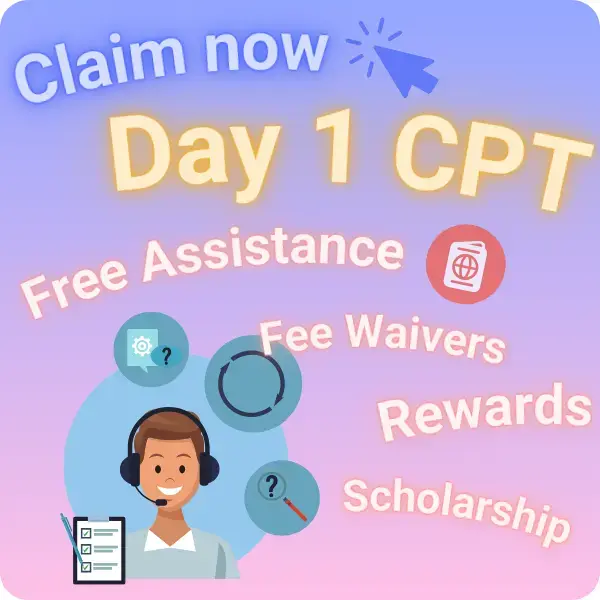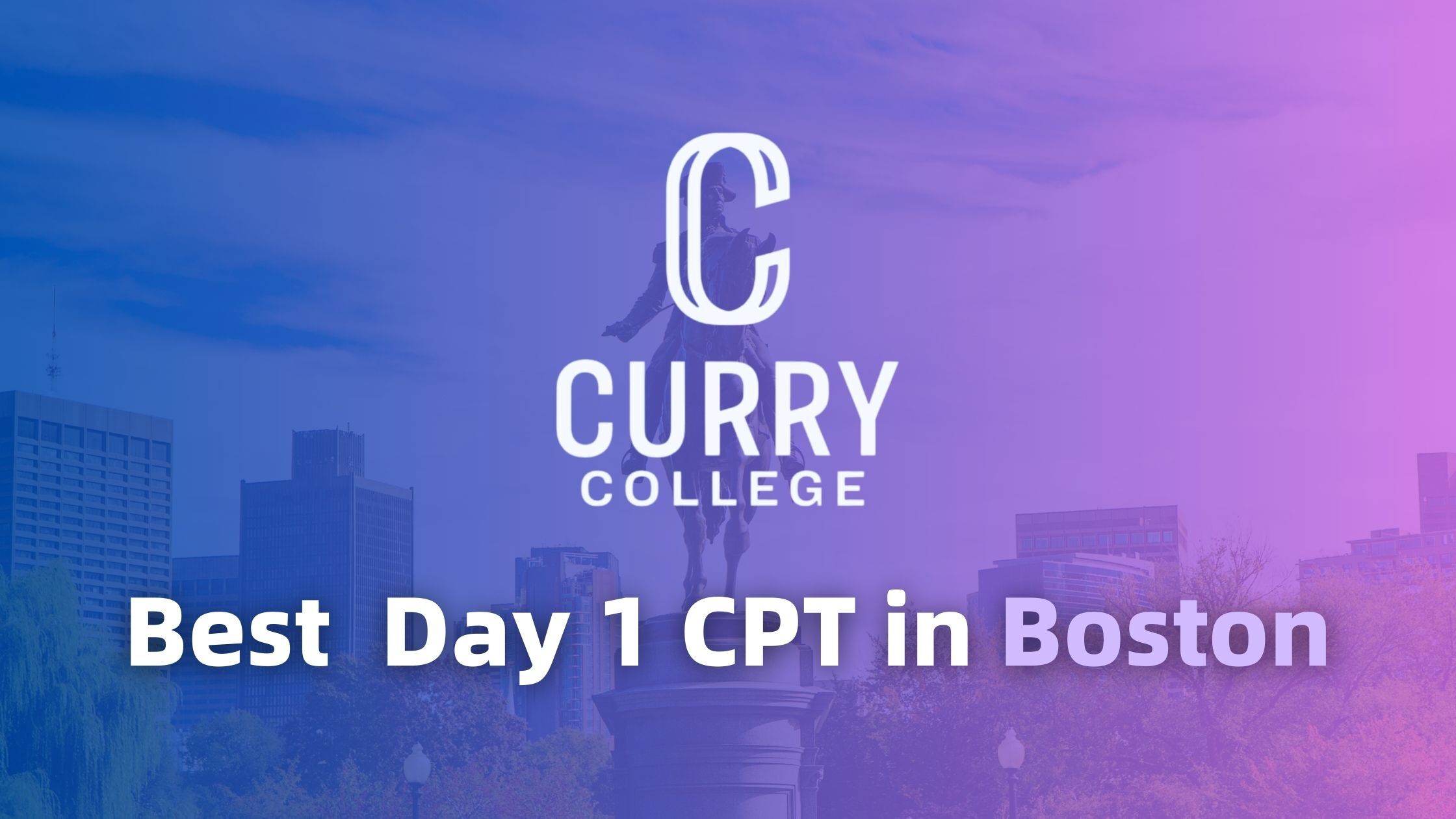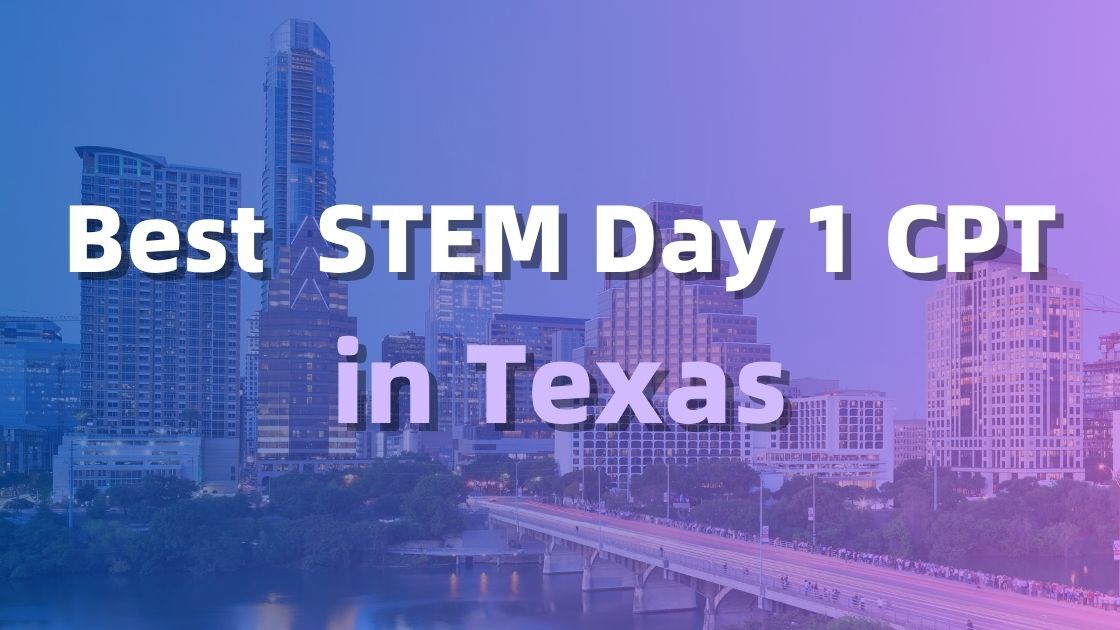Share this
Safeguarding Visa Status in Layoffs: Switching from H1B to F1 Visa
by Abby on Jun 03, 2023
Starting in late 2022, the economy has experienced a significant downturn that has led to major layoffs across industries. From November last year to now, we've seen some of the biggest tech companies announce layoffs as they struggle to stay afloat in these uncertain times. Amazon, Meta, and Twitter led a group of major U.S. companies to conduct large layoffs over the first four months of 2023. For foreign workers on H1B visas, this means added pressure to find a Plan B for their visa status if they are laid off. In this article, we'll explore how to transfer from an H1B visa to an F1 visa and back to an H1B visa again, providing practical advice for those seeking to navigate these challenging times.

Image Credit: Shutterlock.com
Preparing for Layoffs Starting from PIP
There are many reasons why companies might lay off employees, including canceling projects or restructuring entire departments. At Google, in particular, the most common reason for layoffs is when entire teams are let go due to project cancellations. However, in recent years, another type of operation has become popular: PIPs (performance improvement plans). In reality, PIPs are often executed by senior-level employees and can contain some subjective elements. Signing the contract does not necessarily guarantee job security, as this remains a risk during tough economic times. If you have recently been put on a PIP, pay attention to prepare yourself mentally for the possibility of being laid off. Don't be too hard on yourself, as the economic situation is challenging, especially for those transitioning into coding jobs, as ramp-up time is slower than for those majoring in computer science.
What should you do right after being laid off?
Step1: Negotiate with HR on delaying the termination time
After being laid off, an H1B holder only has a grace period of 60 days. The later the termination date is written, the more advantageous it is for you; here are several ways to do that:
-
You can apply for unpaid leave to extend your time on payroll. This is what Uber did to help its employees legally extend the grace period to 90 days during a previous mass layoff. Being on unpaid leave will keep you on the payroll for as long as possible without causing harm to the company.
-
If HR agrees, the best time for unpaid leave is the second-to-last month, and keep your last month on payroll. This will make the process smoother and more secure.
-
If HR can't help you, stay polite and try arguing for more severance packages, such as assistance paying for your return ticket. Use persuasive language to make them think that delaying the written termination time is the most cost-effective solution.
-
Be sure to ask HR to provide an employment relationship certificate that clearly states the termination date and the matter of unpaid leave. Do not include unpaid leave in the severance package because employment relationships are often checked through paychecks. It can be troublesome if you apply for unpaid leave and there is no paycheck for the last period. The employment relationship certificate would be necessary in this situation.
Step 2: Start the interview, accurately target, and actively follow up until you receive an offer.
Don't wait for even a minute. In a bad economy, you are not alone. Although this is comforting, it also means that more people will soon be competing with you for the same openings.
Target them precisely! Streamline your application process, focus your efforts on the aspects of your skillset that are most relevant to the position, and you will increase your chances of success.
You only have 60 days, including the 1-2 weeks, to file for an H1B transfer. You can't afford to wait! When you get an interview, you can ask directly (Don't be shy!): How many candidates will be offered this job? How many candidates are being considered? What stage are they at in the process? If I start now, how long will it take me to complete the process? By clearly understanding these details, you will know what is critical and what is not.
Never cancel any remaining interviews if you receive an offer! Recently, withdrawing verbal offers has been widely seen, and even big companies have started rescinding job offers (Twitter, Coinbase, Microsoft, and Google have all done that!). We heard from a student who had received a verbal offer from Coinbase, had already begun preparing to move, and was told the offer was rescinded. Even Google withdrew over 2000 temporary and contract job offers in 2020. Microsoft was once exposed for giving an offer to an applicant with only one year left on their H1B visa, only to withdraw the offer during the visa evaluation process, citing a lack of time to apply for a green card. Therefore, never give up on interviews that have already been arranged, and don't cancel interviews even if you receive a lowball offer because there may be better options later on.

Image Credit: Job Hunt
Although you may feel hopeless after being laid off, don't underestimate your abilities. Evaluate lowball offers based on the timeline and decide whether or not to accept them or keep them as a backup. Speaking of backup options, ICC (Indian Consulting Company) is a popular alternative. There are now Chinese-run CCCs (China Consulting Company), and although they cannot be compared to MAANG companies, they are still lifesavers for someone on a working visa.
First, you need to stay legally in the US, and then you can focus on the rest of the story. However, why not start by looking for ICC after being laid off? Because Permanent Residence (green card) is more important than H1B visas. Those planning to stay in the US long-term should consider whether their company can grant them a green card application.
Backup Plans: Can't find a job and don't want to go back to your home country? Consider changing your status to extend your stay in the US. What kind of status change would you consider?
The easiest options are B1/B2 or F1.
During the H1B grace period, if you can't find a new job to sponsor your H1B visa, changing your status can help you stay legally in the US. You can switch to a B1/B2 tourist or F1 student visa. However, if you plan to stay in the US long-term, switching to an F1 visa is strongly recommended.
H1B is a visa category that allows immigration, but B1/B2 does not. If you were previously on an H1B visa and then switched back to a B1/B2 visa, the immigration authorities would see this as a sign of indecision. It may not be easy to justify staying in the US.
However, this approach also has risks. Although an F1 visa also does not allow for immigration, explaining why you want to study in the US, gain new skills, or move into a management role is more reasonable. If you pursue an F1 visa, you can use the Day 1 CPT (Curricular Practical Training) option to continue working. If you switch to a B1/B2 visa, you can only stay in the US.
Plan A for changing your status is to use B1/B2 COS (Change of Status) pending to look for work.
If you insist on applying for a B1/B2 visa and then using COS pending to stay legally in the US, you can also search for a new job during the COS pending period. If you find a new job during this time, you can restart your original H1B without going through the lottery again. However, this is not considered an H1B transfer. Instead, you must fill out a new I-129 form with the "new employment" option instead of the "change of employer" option. You must wait until you receive the H1B approval notice before starting work; you cannot begin work with just the receipt notice.
Additionally, you must make sure to cancel your B1/B2 visa application to avoid potential risks in the future. When applying for a green card in the future, USCIS will review your records of legal status in the US, and your legal status during each period is determined by the last valid status you had, known as the "last action rule." If you do not cancel your B1/B2 visa application and it is later approved, it may affect your ability to stay in the US legally or even cause you to violate your status.

Backup plan B: Change to F1 status
It takes approximately 4 months for the status change to take effect within the States, whether you are changing from B1/B2 or F1. If you choose F1, it is recommended that you change your status outside of the U.S. by activating a new F1 status in Mexico while still in the H1B grace period.
How to get a new F1?
Go to a reputable and accredited university and get an offer from them. Then, have a designated University official sign an I-20 with you. It is recommended that you inform the University when you apply that you plan to change your H1B to F1 status, as the change of status should be completed 15 days before the University start day. This way, you can plan your timeline and University start date together and consider which semester suits your application.
Submit the I-539 (H1B -> F1 COS form). Pay the application fee of $370 to the Department of Homeland Security (remember to keep the receipt). Pay the $85 biometrics testing fee (not everyone needs this).
Pay the SEVIS I-901 fee (print the receipt as proof of payment). Start your new SEVIS ID and provide financial proof and other important documents, such as I-94, I-797, and passport, for review by the immigration office.
After changing to F1 status, can you only be a student? No, you can continue to work with Day 1 CPT!
In theory, CPT should only be used after one year of studying at a U.S. University. However, there are exceptions to the one-year requirement for graduate students who require immediate participation in curricular practical training (8 CFR 214.2(f)(10)(i)).
To use this exception, you must meet two conditions:
1) enrolled in a master's or higher degree program.
2) the program requires extracurricular practice from the first day of class. The first condition is easy to meet; a trustworthy DSO from a reputable university can review your course requirements and job details and then issue your CPT accordingly.
What if you find a job during the F1 period?
- If your employer does not agree to let you work while studying or you feel that your job is secure and do not want to use CPT (after all, paying tuition fees and studying full-time is hard work), then you can choose to have your employer help you apply for an H1B extension. There is no need to reapply for the lottery (the restart process is the same as for B1/B2 COS pending; it is a new H1B, not a transfer, which means you get a new 60-day grace period; see the next section).
- If your employer is flexible, the best solution is: the employer provides an offer, and you use CPT to work, graduate, and continue to use OPT. Once you have used OPT, restart the H1B you didn't use before and start another process to apply for a green card. Both F1 and H1 are visas that allow you to stay in the U.S. legally and reasonably. Applying for a green card is separate from the F1 or H1, and you should not assume that you will get a green card just because you have stayed in the U.S. for a long time. You need to apply for a green card actively.
60-day grace period (Grace Period) FAQs
- Is it inevitable that every H1B holder has 60 days grace period?
No. Not every H1B holder has a full 60 days or may be unable to enjoy the full 60 days if their H1B visa expiration date is less than 60 days away. In this case, only the shorter one works for you. For example, if you were laid off on September 30th and your H1B expires on December 31st of the same year, the number of days between the layoff date and the status expiration date is 92 days so that you would have a 60-day grace period. If you were laid off on November 30th, with only one month until your status expiration date, your grace period would be just one month.
- How do I apply for and verify the grace period?
In practice, you can use the grace period directly without applying for it. However, when you extend your H1B or apply for a change of status, USCIS will review whether your use of the grace period was reasonable.
- Can an individual use the 60-day grace period multiple times?
Yes, but each time, it must be within the same H1B authorization. You are entitled to a 60-day grace period for each authorization, but you can only use it once per authorization period. If you were laid off by Company A and used the grace period to find a new employer, Company B, to transfer your H1B (which is still within the same H1B authorization), and then unfortunately were laid off by Company B, you would not have another 60-day grace period. In this case, you need to consider an urgent change of status, such as enrolling in a University to switch to an F1 visa, before the termination date provided by the company.
- Can the grace period be used cumulatively?
No. Continuing the example above, if you were laid off by Company A and found Company B before the 60-day grace period ended, you cannot use the remaining grace period if you were later laid off by Company B. You can only use the grace period once per authorization period, and it must be used consecutively. It cannot be accumulated or used in separate segments.
- Can I work during the grace period?
No, you cannot work until your new employer completes the H1B application process.
- Is there a 60-day grace period if I resign voluntarily?
Yes, the calculation and usage method are the same as if you were laid off.
Share this
- Day 1 CPT (32)
- H1B (24)
- Day 1 CPT Universities (18)
- H1B Lottery (11)
- CPT (6)
- Green card (5)
- University Application (4)
- F1 (3)
- F1 Status (3)
- International Students (3)
- USCIS (3)
- Westcliff University (3)
- Concordia University Texas (2)
- F1 Reinstatement (2)
- H1B Layoff (2)
- H1B Status (2)
- OPT (2)
- STEM OPT (2)
- change of status (2)
- Bay Atlantic University (1)
- Curry College (1)
- English Proficiency (1)
- Goldey-Beacom College (1)
- Green Card Application (1)
- H4 EAD (1)
- H4 Visa (1)
- Humphreys University (1)
- Immigration (1)
- International Student Travel (1)
- Jobs (1)
- L1 (1)
- Layoff (1)
- McDaniel University (1)
- O1 (1)
- Saint Peter's University (1)
- Salem University (1)
- Scholarships (1)
- Sofia University (1)
- Tax (1)
- December 2025 (1)
- November 2025 (2)
- October 2025 (1)
- September 2025 (3)
- August 2025 (2)
- June 2025 (1)
- May 2025 (2)
- March 2025 (2)
- November 2024 (2)
- October 2024 (4)
- September 2024 (3)
- August 2024 (3)
- July 2024 (2)
- June 2024 (7)
- May 2024 (3)
- April 2024 (4)
- March 2024 (3)
- February 2024 (5)
- January 2024 (1)
- October 2023 (3)
- September 2023 (6)
- August 2023 (10)
- July 2023 (3)
- June 2023 (4)
- May 2023 (1)
- April 2023 (1)
- February 2023 (1)
- November 2022 (1)
- October 2022 (3)
- September 2022 (1)
- August 2022 (1)

Full Day 1 CPT Universities List
Click here to view 30+ Day 1 CPT universities in different states
Scholarships & Payment Plan
Click here to explore extensive scholarships and financial aids
Get Free Assistance Now
We can help you with admission, fee waiver, and scholarships
Featured Articles
Studying and Working in the US

What If a Second Master’s Degree Isn’t Allowed? Why a Day 1 CPT DBA Could Be Your Best Path Forward
-Nov-22-2025-12-02-59-3078-AM.jpg)
Which Day 1 CPT Programs Offer a Fixed Summer Break? You Won’t Believe How Rare the Answer Is…

Why Curry College is a Top Choice of Day 1 CPT in Boston

Concordia University Texas Launches New MCS Program - A Top STEM Day 1 CPT Option





.png?width=204&height=68&name=Verified%20(2).png)


.png?width=250&height=83&name=Logo%20-%20Rectangle%20(2).png)
.png?width=250&height=83&name=Logo%20-%20Rectangle%20(1).png)
